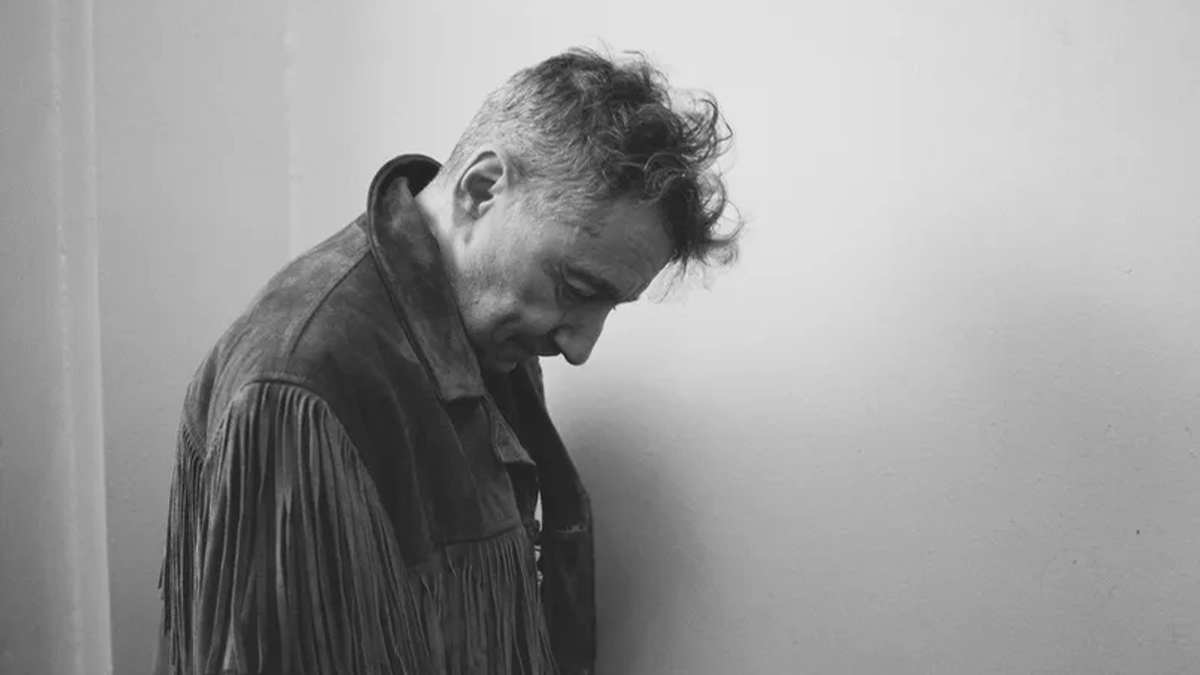The following text was first published on October 13th, 2023, in conjunction with Movie Club #8: ‘Gestures’ by Vincent Guilbert. It is now published publicly for the first time, in celebration of Loren Connors’ 76th birthday.
Header image by Vincent Guilbert.
by Maximilien Luc Proctor
By the fire—
how cold my feet
Full of dreams
—Loren Connors, Autumn’s Sun p. 73
Faced with the blank page, or the night sky, the music of Loren Connors (also credited variously over the years as Guitar Roberts, Loren Mattei, and Loren MazzaCane Connors) swirls through the possibilities of any and all open space, assembling sparse reconstructions of thought as musical vibrations. The electric guitar has been done to death, for decades. From about the ’90s on, Connors brought it back to life—but as early as the late ’70s he did the same for the acoustic guitar, albeit by slinking it into the grave. His earliest recordings began with the first (of ten) volumes of Unaccompanied Acoustic Guitar Improvisations. In 1981 he recorded The Curse of Midnight Mary to tape in a graveyard—a tape that was lost and then rediscovered in 2008. It is a collection of vivisected acoustic blues ramblings wherein Connors sets his full faith in the power of individual (heavily bent) notes accompanied by vocal murmurs straight from the heart; wordless and totally singular. A blues of the collective unconscious.
Throughout the ’80s Connors kept the acoustic close and collaborated with folk singer-songwriter Kath Bloom for four albums, his unique style tinging the tunes with an otherwise totally unexpected inflection (all released through his own labels Daggett and St. Joan). At this time he also collaborated with local blues legend Robert Crotty, whose own recordings would first see the light of day in 2017 by Connors’ volition: a compilation called Robert Crotty with Me.
The late ’80s saw the beginnings of Connors’ fruitful and longstanding collaborations with life partner Suzanne Langille, a perfect pairing best exemplified in such tender albums as the live compilation 1987-1989 (2000) and Enchanted Forest (1998)—which was recorded in their apartment with a Tascam Porta 5. Yet the couple have a harsher side, most apparent on the nightmare-adjacent album I Wish I Didn’t Dream (2012) and on the three albums by their group Haunted House. For anyone interested in Connors, this Pitchfork interview with Langille is essential reading.
For Connors, the ’90s began and ended with a pair of stone-cold masterpieces conducted in his new double-layered and fully electric composition style—Blues: The Dark Paintings of Mark Rothko (1990) and Airs (1999). Both serve as excellent primers for the uninitiated, the former a somber and dry meditation befitting of its source material, and the latter a tender melancholic stroll through half-lit dockside streets, the very sound of reverberating through time. Both albums, played under the right conditions and listened to attentively, offer a bewitching and delicate employment of individual notes into empty space. Deconstructed pieces dropped from on high, fluctuating between destiny and chance as they fall. Both present an artist giving to rather than taking from his influences. In the case of Airs, the influence stemming from linguistic rather than visual arts; the 2021 re-issued record offers a small insight on the back:
In 1822, the poet Percy Bysshe Shelley drowned in a storm at sea. His remains were found ten days later, recognizable only by the volume of John Keats poetry in his jacket pocket. A memorial was given and his ashes left, there on the shore.
Meanwhile an insert includes a facsimile of a handwritten note from Connors:
This collection of Airs for guitar is all my work from 1992-2001. I was inspired by O’Caran’s Airs and Irish Airs of the past for these works. They came easily to me. I never had to labor over their completion. They seemed to just be there in me. Maybe the fairies put them in my hand. Ah, but do I believe in fairies—of course not! But they’re there!
Despite the lack of lyrics across most of his discography, poetry has always been important to Connors. In 1987 he published Carboard Boxes, a collection of poetry which would mostly make their way into the 1999 book Autumn’s Sun, reprinted in 2019 and also featuring a 1987 essay written together with Langille, “The Dancing Ear: Blues and Haiku”. Autumn’s Sun is an impressionistic journal of Summer-Winter of 1987 in New Haven, Connecticut, with entries punctuated by haikus, in the vein of Matsuo Bashō’s The Narrow Road to the Interior (1702). It’s a modest and exceptional volume.
In 1992, Connors was diagnosed with Parkinson’s disease, yet his output has increased substantially since. Eleven days after the time of this writing, he will turn 74, and as recently as May of this year he performed abroad at Cafe OTO in London, alongside recurring collaborator Alan Licht. The pair’s latest record, At the Top of the Stairs came out at the tail end of April. Connors typically performs closer to home—which is Brooklyn Heights these days. But the collaboration is indicative of a major development in this late phase of his career. Since 1995, he has collaborated with the likes of Jim O’Rourke, John Fahey, Darin Gray, Keiji Haino, Kim Gordon, Oren Ambarchi, Thurston Moore, Margarida Garcia, and Tom Carter, among others. Since 2002 he has intermittently released The Departing of a Dream, a continuing series inspired by Miles Davis, with its most recent installment being Volume VII, in 2019. Unlike the compositions proper of the preceding phase, the last two decades have largely consisted of completely improvised works, recorded live. Recordings that have proven Connors to be an unstoppable force. An artist who yokes from minuscule vibrating strings a profound and life-altering power. Poet, magician, sage. Loren.


One thought on ““I Listen to the Worn-Out Rain”—the Ineffable Vibrations of Loren Connors”